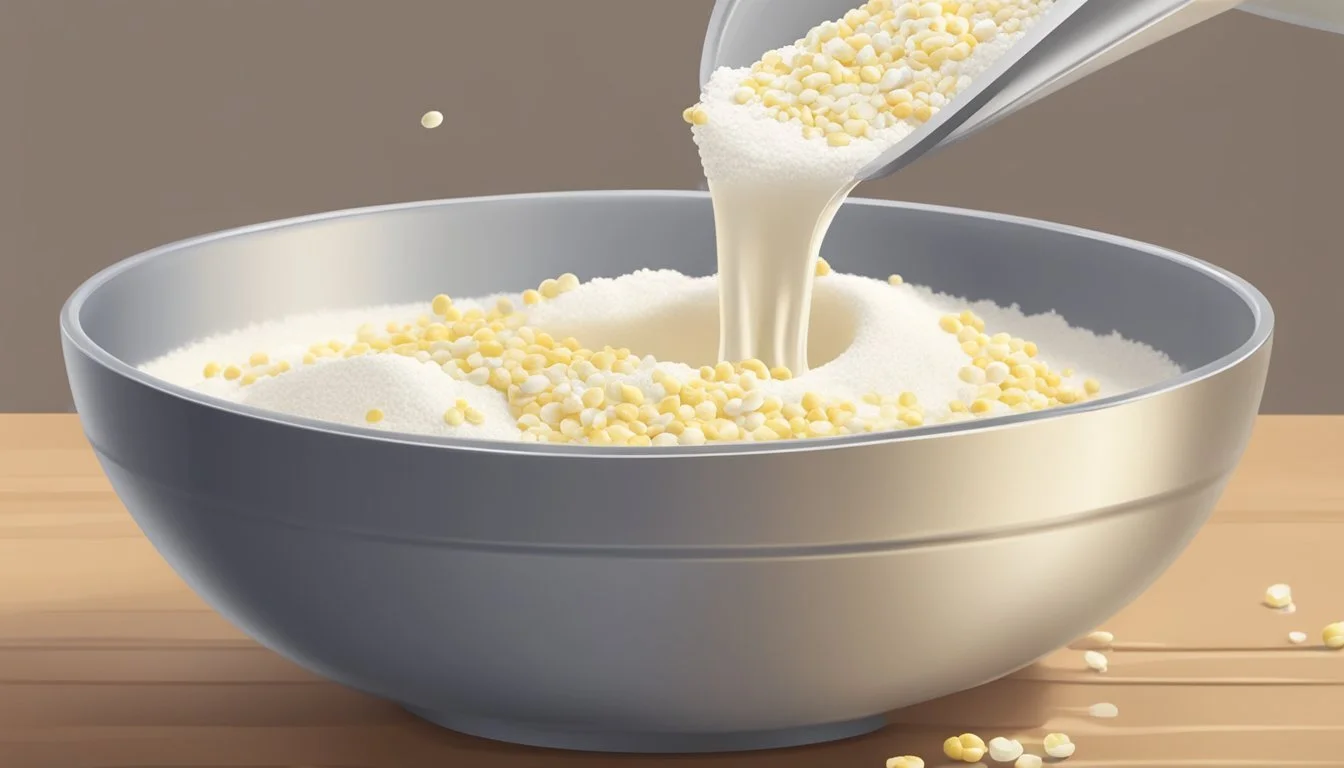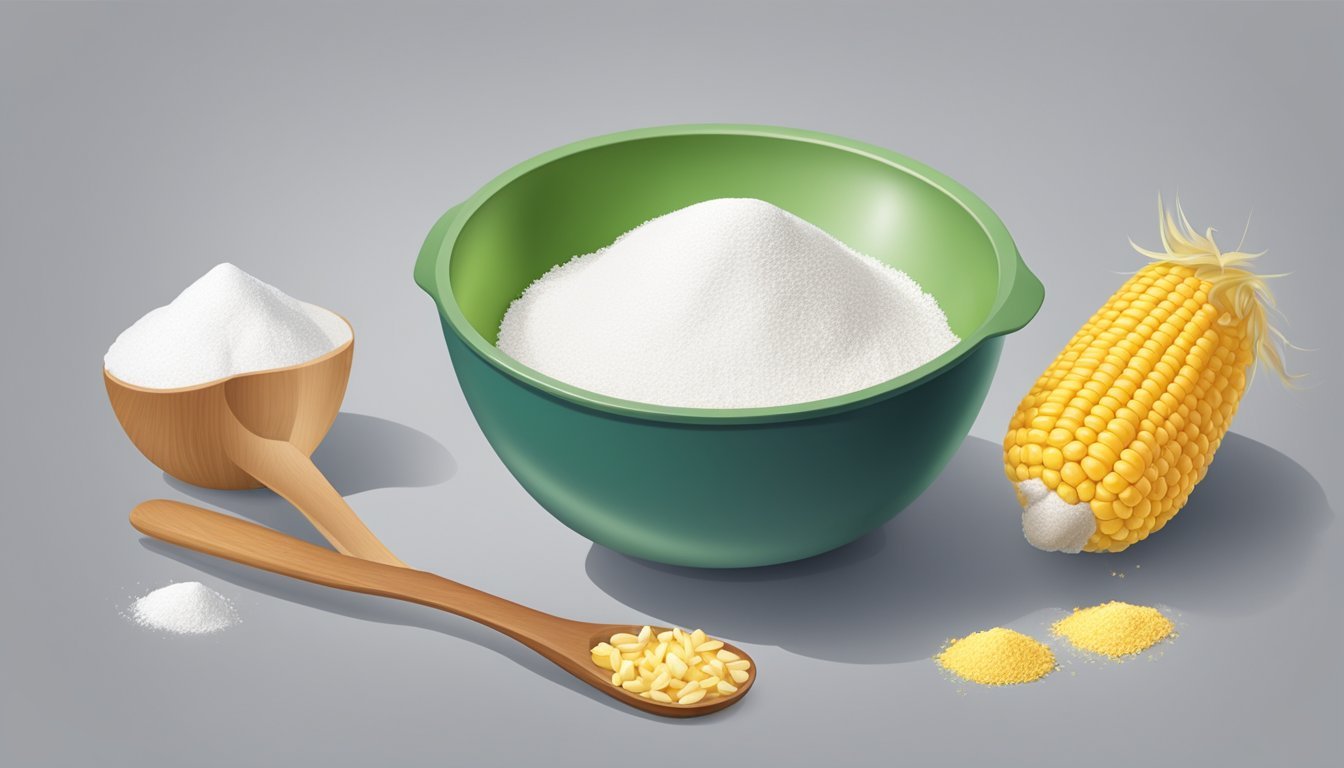How to Substitute Cornstarch for Flour
A Guide to Flour Alternatives
Substituting cornstarch for flour can offer a solution for those seeking a gluten-free alternative or a different texture in their cooking and baking endeavors. In many recipes, cornstarch serves as an excellent thickening agent due to its high starch content, making it a valuable ingredient in sauces, gravies, and custards (how long do custards last?). When it comes to frying, using cornstarch can result in a crisp and light texture, enhancing the overall experience of the dish.
For bakers experimenting with cornstarch as a flour substitute, it's essential to understand the appropriate ratios and how this change may affect the end product. Typically, cornstarch has twice the thickening power of flour, meaning adjustments to the recipe are necessary to achieve the desired consistency. The differences in protein content between cornstarch and flour also play a role in the texture and structure of baked goods, which is critical to consider during the substitution process.
Armed with this knowledge, cooks and bakers can confidently employ the use of cornstarch in their recipes. It allows them to adapt traditional dishes to meet dietary requirements, play with textures, and perhaps even improve upon the original dishes. Adhering to proper substitution ratios ensures that the integrity of the recipe is maintained, while also opening the door to culinary creativity and innovation.
Understanding Cornstarch and Flour
When adapting recipes, it's essential to know the distinct characteristics of cornstarch and flour as they play specific roles in cooking and baking due to their unique composition and properties.
Composition and Properties
Cornstarch is a fine, powdery starch that is extracted from the endosperm of corn kernels. It's composed almost entirely of carbohydrates, with a minimal protein content and no gluten, making it an excellent option for those adhering to a gluten-free diet.
Flour, specifically all-purpose flour, is milled from wheat and contains both carbohydrates and a significant amount of protein, which contributes to the formation of gluten. The presence of gluten has a major influence on the texture and structure of baked goods.
Roles in Cooking and Baking
Both cornstarch and flour are frequently utilized for thickening sauces, gravies, soups, and puddings; however, they function quite differently in the kitchen.
Cornstarch: Known for creating a glossy and clear thickening with a silky texture, cornstarch is often used at the end of cooking. It's mixed with cold water to make a slurry before being added to prevent lumping. Cornstarch has twice the thickening power of flour, so less is needed for the same result. It’s important to avoid overcooking with cornstarch, as it can cause mixtures to thin when they cool.
Flour: Provides not only thickening but also contributes to the body and taste of a dish. Flour is usually cooked with fat to make a roux as a base for thicker sauces and gravies, and requires a longer cooking time to remove the raw flour taste. It tends to produce an opaque and cloudier appearance in sauces compared to cornstarch.
By understanding these differences, one can make informed decisions when substituting one thickening agent for the other in various cooking and baking applications.
Essential Substitution Principles
When substituting cornstarch for flour, it's crucial to understand the correct ratio and the implications for texture and consistency to maintain the integrity of the recipe.
The Importance of Ratio
In a substitution scenario, the ratio of cornstarch to flour is not 1:1, due to their differing thickening abilities. Typically, one must use about 1 1/3 cups of cornstarch for every 1 cup of flour required in a recipe. This adjustment ensures the end product maintains its intended texture without becoming too runny or overly thick.
General Substitution Ratio:
Flour to Cornstarch: 3:4
For every 3 tablespoons of flour, use 4 tablespoons of cornstarch.
Additionally, since cornstarch has higher thickening power, one should incorporate extra liquid to balance the mixture. It's essential to measure these elements precisely to achieve the desired outcome.
Texture and Consistency Considerations
Cornstarch behaves differently from flour when used as a thickener. It imparts a silkier, glossier texture which is more pronounced when the mixture reaches a full boil, allowing starch granules to swell.
Consistency Tips:
Heat: Cook over medium-low to medium heat to avoid the formation of lumps.
Stirring: Stir gently to prevent breaking down the thickening agent, which can compromise the texture.
Creating a slurry is recommended when using cornstarch, which involves mixing it with a small amount of cold liquid before adding it to the hot liquid. This method helps in evenly distributing the thickener without clumping. It's essential to cook the slurry briefly until the desired consistency is achieved since overcooking can lead to thinning upon cooling.
Cornstarch in Specific Recipes
When utilizing cornstarch in recipes, it's crucial to understand the right substitution ratios and techniques to achieve the desired consistency and texture. Cornstarch serves as a powerful thickening agent and can provide unique qualities to various dishes when used properly.
Thickening Sauces and Gravies
For thickening sauces and gravies, cornstarch is an effective flour substitute due to its high thickening power. A general guideline is to use 1 tablespoon of cornstarch for every 2 tablespoons of flour called in the recipe. Mix cornstarch with a cold liquid to create a slurry before adding it to your sauces or gravies to prevent lumping.
Preparing Soups and Stews
Cornstarch can thicken soups and stews without imparting the flavor that flour might. For these dishes, use 1 tablespoon of cornstarch per cup of liquid to get the correct viscosity. Again, mix cornstarch with some cold broth or water before incorporating it to maintain a smooth texture.
Baking Cakes and Pies
In baking, incorporating cornstarch can lead to a lighter and more delicate crumb, particularly useful in cakes (how long do cakes last?) and pie fillings. For cakes, substitute 1/4 cup of cornstarch for 1 cup of cake flour to retain the softness. For pie fillings, use 1 tablespoon of cornstarch per cup of fruit juice for a clear and shiny thickening result.
Creating Crispy Coatings
When frying, a cornstarch batter creates a crispier coating for items like chicken. The lack of gluten in cornstarch results in a lighter and less tough crust. A 50-50 mix of flour and cornstarch in your batter can produce the desirable crunchy texture when deep-frying.
Alternative Thickening Agents
When substituting cornstarch for flour, one must consider several gluten-free alternatives that behave similarly as thickeners. These options provide different benefits and may alter the texture and taste of the final dish to varying degrees.
Tapioca and Arrowroot
Tapioca starch, derived from the cassava root, is a suitable thickener for pies, jellies, and soups. Unlike cornstarch, it freezes well, making it ideal for items that require cold storage. Arrowroot powder, another root-derived starch, thickens at a lower temperature and is perfect for delicate sauces and fruit desserts. It is chosen for its neutral flavor and glossy finish.
Rice and Potato Starch
Rice flour can be used not only as a thickener but also in gluten-free baking. It's excellent for creating a smooth, creamy texture in soups and sauces. Potato starch boasts strong thickening properties without adding a hefty flavor, though it should be added towards the end of cooking to prevent thinning.
Other Gluten-Free Options
For those seeking varied gluten-free thickeners, xanthan gum stands out. It is highly effective in small quantities and does well in hot and cold dishes. One should blend xanthan gum carefully to avoid a gummy texture. Across gluten-free baking, these thickening agents foster flexibility and innovation, accommodating various dietary needs without sacrificing quality.
Advanced Techniques and Tips
When substituting cornstarch for flour, one must consider the specific cooking application to achieve the desired thickness and texture without compromising the dish.
Making a Slurry
A slurry is crucial for ensuring a lump-free texture when thickening sauces or gravies. The cook should first combine cornstarch with an equal part cold water, stirring until smooth. This mixture is then gradually introduced to the hot liquid, with constant stirring, until the desired consistency is reached.
Creating a Roux
For recipes like soups and stews that require a more substantial base, a roux provides structure and flavor. Start by heating a fat (such as butter or oil), then incorporate an appropriate amount of cornstarch until a paste forms. The roux should be cooked for a couple of minutes before liquids are slowly whisked in, which will prevent the formation of clumps.
Using Substitutes in Asian Cooking
In Asian cuisine, the sheen and texture provided by cornstarch are essential. When creating stir-fries or marinades, cooks incorporate a cornstarch slurry towards the end of cooking, ensuring that high heat exposure doesn't break down the sauce’s thickening ability. With delicate balance, the cook uses cornstarch to achieve a glossy finish without altering the dish's authentic flavors.
Adapting to Dietary Needs
When substituting cornstarch for flour, it is crucial to consider the dietary restrictions and needs, especially for those with gluten intolerance or specific carbohydrate and protein requirements. Adapting recipes can maintain the same cooking properties while making them suitable for various diets.
Managing Gluten Intolerance
Individuals with celiac disease or gluten intolerance require gluten-free options. Cornstarch is inherently gluten-free, making it an excellent alternative for thickening sauces and gravies in lieu of flour, which contains gluten. When replacing flour with cornstarch, here are specific guidelines to follow:
Ratio: For every tablespoon of wheat flour, approximately 1.5 teaspoons of cornstarch should be used.
Mixing: Combine cornstarch with a cold liquid before adding to hot substances to prevent clumping.
Cooking Time: Do not overcook, as the thickening effect diminishes and the mixture may become thin upon cooling.
Control Carbohydrate and Protein Content
Diets that monitor carbohydrate intake, such as ketogenic or diabetic meal plans, may require adjustments in the use of thickeners. Cornstarch, while lower in protein than flour, is high in carbohydrates. Those managing carbohydrate intake might opt for alternative thickening agents with lower carbohydrate content, such as guar gum or xanthan gum, adjusting the quantity to achieve the desired thickness.
Low-Carb Substitute:
Guar gum or xanthan gum (use about 1/4 to 1/2 teaspoon per cup of liquid)
Require less quantity to thicken
High-Protein, Low-Carb Flour Alternatives:
Almond flour
It is important for individuals to consider these options against their specific dietary needs and preferences to ensure that the substitute not only serves as a thickener but also aligns with their nutritional goals.
Substitution Pitfalls to Avoid
When substituting cornstarch for flour, chefs should be aware of several key factors to preserve the texture and taste of dishes. A direct 1:1 substitution is not advisable due to cornstarch's stronger thickening capabilities. The rule of thumb is for every 3 tablespoons of flour, 4 tablespoons of cornstarch should be used. Exceeding this ratio can result in an undesirably gelatinous consistency.
One should also consider that cornstarch can produce a shinier appearance than flour, which might not be suitable for all recipes. If the goal is to maintain a matte finish in sauces or soups, this shine can be unexpected and unappealing.
Heat Sensitivity: Chefs must be cautious with the application of heat. Cornstarch thickens at a lower temperature compared to flour, and overcooking can cause the mixture to break down and become thin upon cooling.
Lumping: To avoid a lumpy texture, one should mix cornstarch with a cold liquid first before adding it to hot mixtures. High heat can accelerate lump formation.
Stirring: Vigorous stirring can break down the thickening agents in cornstarch, leading to a thinner consistency than desired. Gentle stirring is recommended.
Lastly, be mindful of the flavor. Cornstarch is flavor-neutral, but if too much is used, it can dilute the overall taste of the dish. Chefs are advised to taste and adjust seasonings accordingly when making substitutions.
These guidelines will help ensure a successful replacement of flour with cornstarch without negatively impacting the dish.






